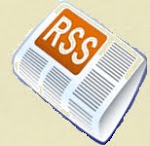
It’s easy to become protective of the work you do.
It’s yours.
You made it.
The automotive industry created or adopted many checks and balances to ensure that work was not only done in the right way, but produced good results. These checks and balances are often called by names like: FMEAs, 8Ds, Design Reviews, Spider charts, and Control Plans. There are other names too.
Bringing these tools into your company can work like a charm in producing amazing high quality high output equipment and product. The charms work when the whole team is engaged in the process of using the tools and enforcing their use.
Let’s take one tool as an example.
The FMEA.
Typically many people are involved with this: the developing engineer, a quality representative, a machine operator, the production engineer, and perhaps two other colleagues contributing to the diligence of the design. Three managers are also involved: the developing engineer’s manager, the program manager of the project, and the production manager.
Why so many people?
When you’re a part of creating something, it becomes yours. You get protective of change and defensive on function. Perhaps you’ll even let a few things slide. It’s human nature. As part of a team, you might let someone off the hook if they missed a few things or give them the ‘few extra days’ they’ve requested to make something right.
The check is the document as proof of the work.
(the machine if not designed in a thoughtful, risk-assessed, BEA way will break down though not always immediately!)
The balance is the pool of managers who make sure the work is done.
If the checks and balances are thrown off, it’s possible that all the work might not get completed. It’s possible that a machine run-off won’t occur, that needed fixes get put off indefinitely, that a machine could break down often, and people won’t get trained.
Sometimes the root cause of a problem goes deeper than its immediate ‘obvious’ fix.
How is the process of checks and balances working in your company?

